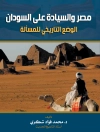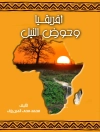The Arctic has, for some forty years, been among the most innovative policy environments in the world. The region has developed impressive systems for intra-regional cooperation, responded to the challenges of the rapid environmental change, empowered and engaged with Indigenous peoples, and dealt with the multiple challenges of natural resource development. The Palgrave Handbook on Arctic Policy and Politics has drawn on scholars from many countries and academic disciplines to focus on the central theme of Arctic policy innovation. The portrait that emerges from these chapters is of a complex, fluid policy environment, shaped by internal, national and global dynamics and by a wide range of political, legal, economic, and social transitions. The Arctic is a complex place from a political perspective and is on the verge of becoming even more so. Effective, proactive and forward-looking policy innovation will be required if the Far North is to be able to address its challenges and capitalize on its opportunities.
Tabla de materias
1. Introduction: The Circumpolar Dimensions of the Governance of the Arctic.- Part I: Indigenous Peoples and Arctic Social Dynamics.- 2. Indigenous Peoples of the Arctic: Re-taking Control of the Far North.- 3. Indigenous Internationalism in the Arctic.- 4. Demographic Changes in the Arctic.- 5. State Expansion and Indigenous Response in the Arctic – A Globally Integrated Northern Borderland Emerges from the Historical Synthesis of Northern Frontier and Northern Homeland.- 6. The Economy of the Arctic.- 7. Extractive Energy and Arctic Communities.- 8. Innovation, New Technologies, and the Future of the Circumpolar North.- 9. Arctic Advanced Education and Research.- 10. Circumpolar Business Development – The Paradox of Governance?.- 11. Multinational Corporations in the Arctic: From Colonial-era Chartered Companies to Contemporary Co-management and Collaborative Governance.- 12. The Future of Work in the Arctic.- Part III Policies of Arctic Nations.- 13. Russia’s Arctic Regions and Policies.- 14. Government, Policies, and Priorities in Kalaalit Nunaat (Greenland): Roads to Independence.- 15. Arctic Policy of the United States: An Historical Survey.- 16. Iceland as an Arctic State.- 17. Svalbard: International Relations in an Exceptionally International Territory. 18. Europe’s North: The Arctic Policies of Sweden, Norway, and Finland.- Part IV: The Arctic and International Relations.- 19. The Arctic in International Affairs.- 20. East Asia (Japan, South Korea, and China) and the Arctic.- 21. The History of USA-Russia Relations in the Bering Strait.- 22. Canada and Russia in an Evolving Circumpolar Arctic.- Part V: Arctic Legal and Institutional Systems.- 23. The United Nations Convention on the Law of the Sea and the Arctic Ocean.- 24. Arctic Policy Developments and Maritime Transportation.- 25. Emergence of a New Ocean: How to React to Massive Change?.- 26. International Indigenous Rights Law and Contextualized Decolonization of the Arctic.- 27. The Future of the Arctic Council.- Part VI: Arctic Security.- 28. The Evolving North American Security Context: Can Security Be Traditional?.- 29. The Arctic and Geopolitics.- 30. The Militarization of the Arctic to the 1990.- 31. Arctic Climate Change: Local Impacts, Global Consequences, and Policy Implications.- Part VII: Reflections on Future of the Arctic.- 32. The Future of the Arctic: Policy Prospects for the Twenty-First Century.- 33. Dotting the Ice.
Sobre el autor
Ken S. Coates is Canada Research Chair in Regional Innovation at the Johnson-Shoyama Graduate School of Public Policy, University of Saskatchewan, Canada.
Carin Holroyd is Associate Professor of Political Studies at the University of Saskatchewan, Canada.












